i/o Mimicry is an interactive light-up button game system designed to merge technology, play, and music into a fun and engaging art experience. The system features large LED-embedded buttons, speakers, and multiple play modes, making it accessible to people of all ages.
Collaborators: Victor Lai & Anouk Borris
Project Timeline: November 2023 – June 2024
Problem
This project aimed to explore interactive art in order to maximize its fun, engagement, and accessibility. I wondered, what interventions can be done to maximize interactivity – the key distinction between just art? What makes interactive art flexible and inviting to all ages? Central to this exploration is the concept of play, engagement, and interactions between participants.
The vision was to create a dynamic art installation that blended technology, play, and music to inspire play and creativity. The design had to balance artistic appeal with practical considerations such as financial constraints, ease of setup, transportability, and durability.
As the idea evolved, a game system incorporating buttons, lights, and sounds emerged as the core concept. Funding, a five-month timeline, design, and construction became the next hurdles. With an upcoming arts festival, Otherworld1, as the target showcase, I assumed the role of project manager, leading two collaborators in turning this vision into reality.
Action
The initial concept for an interactive art exhibit began through many discussions with Victor Lai. We revolved on ideas of movement, and interaction before evolving into a more comprehensive vision. We started with the concept of a reaction test and the mechanics needed to support such an idea – buttons, lights, and feedback mechanisms. As we explored these core elements, the potential they offered for play began to transform the exhibit into a more comprehensive and dynamic experience.
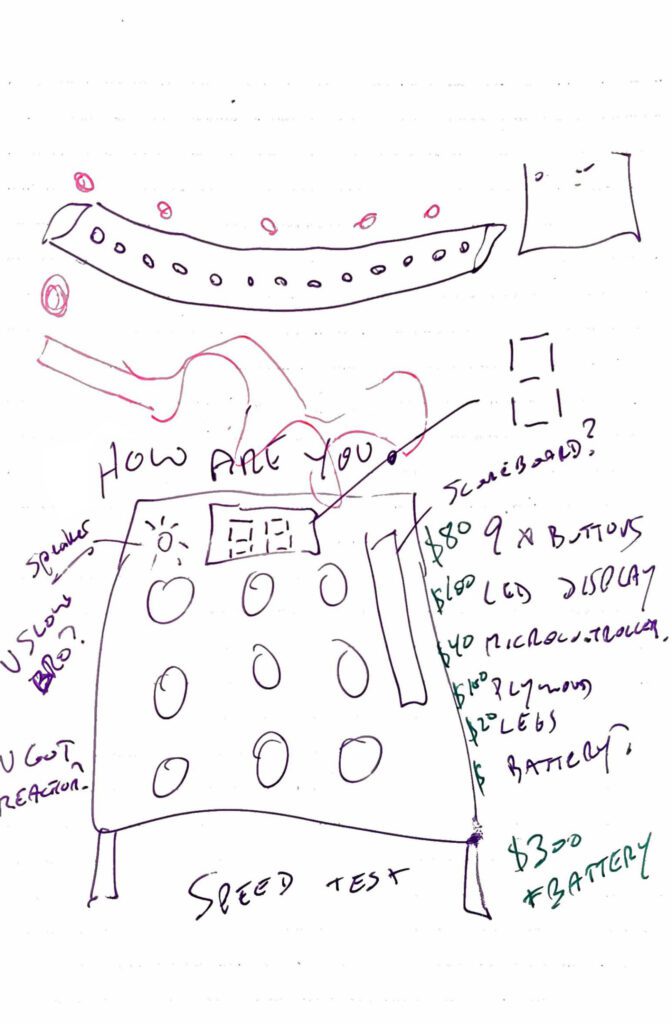
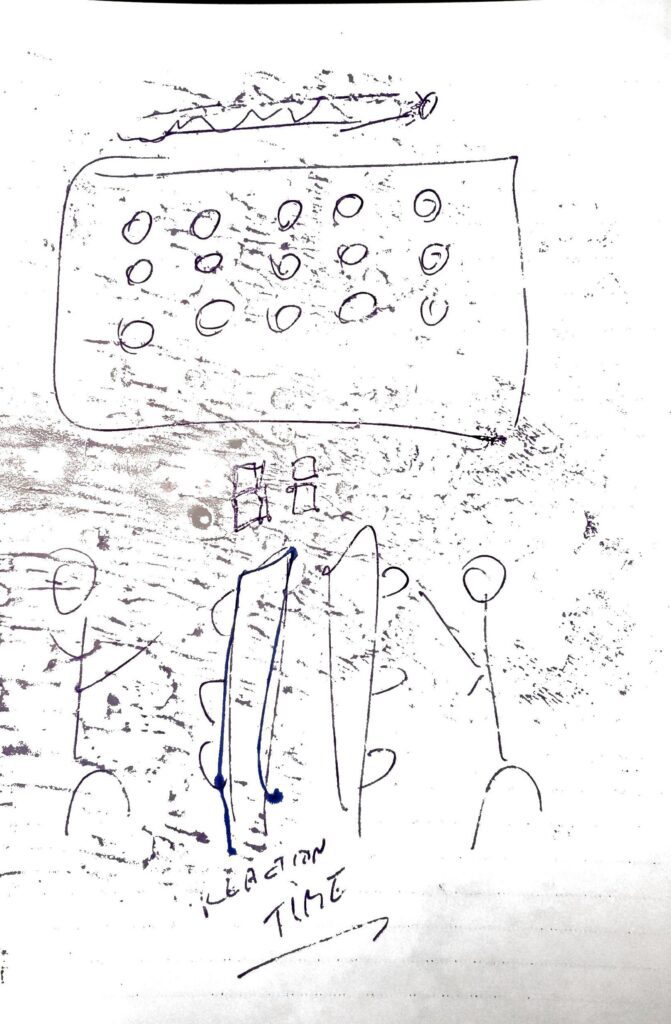
Prior to securing funding, I designed elements that could be explored without any monetary investment. This involved creating detailed models in Fusion 360 and prototyping the game modes.
Only through exploring the design in 3D modelling did the iconic central hole emerge. This feature enhances connection and engagement by allowing players to see each other eye-to-eye, fostering a more interactive and immersive experience.
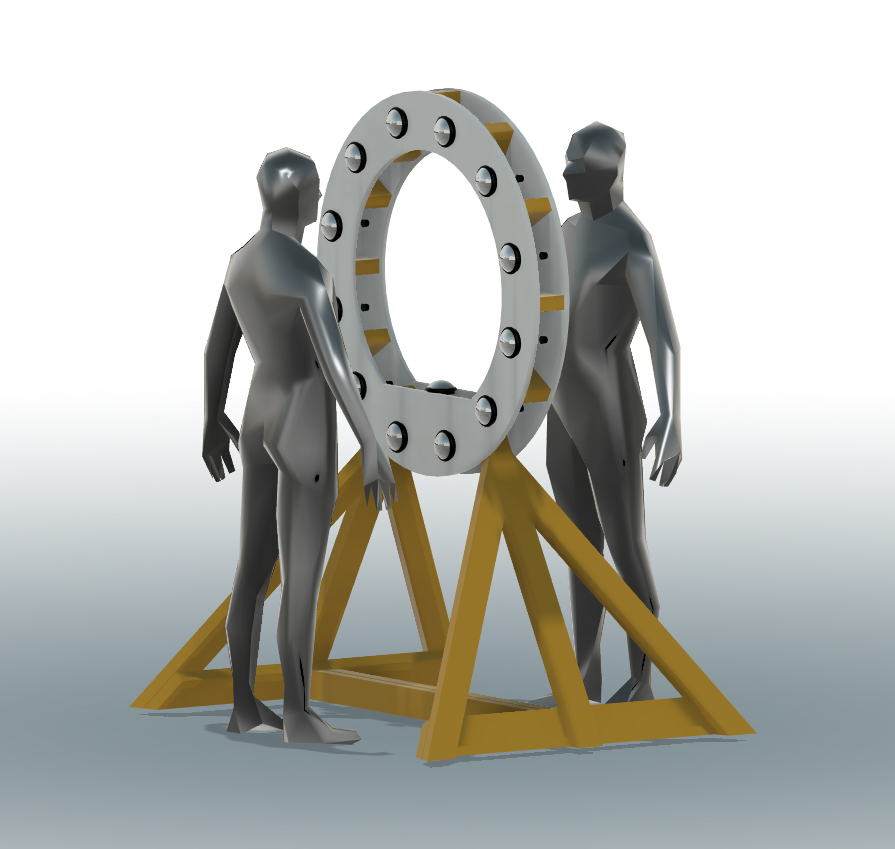
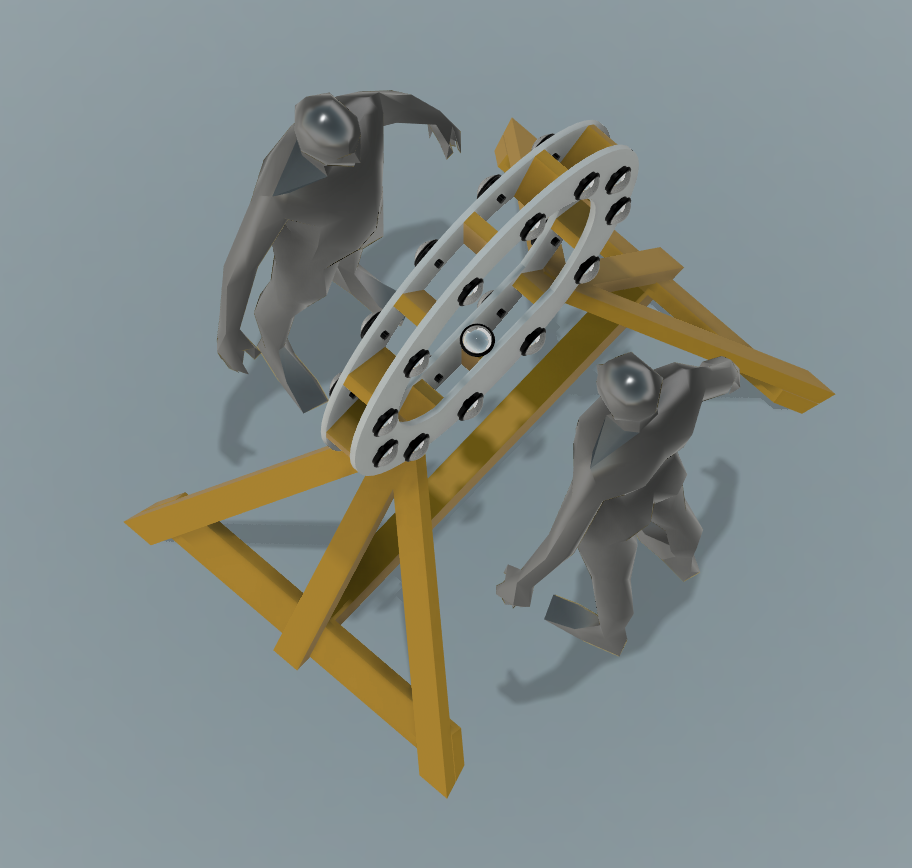
I organized the ideas and submitted a grant application early in the process knowing that funding confirmation would arrive just two months before the event. To ensure we could hit the ground running once funds were secured, I focused on completing the ideation phase by producing a detailed project design, timeline, and budget to lay a solid foundation for the subsequent stages of the project.
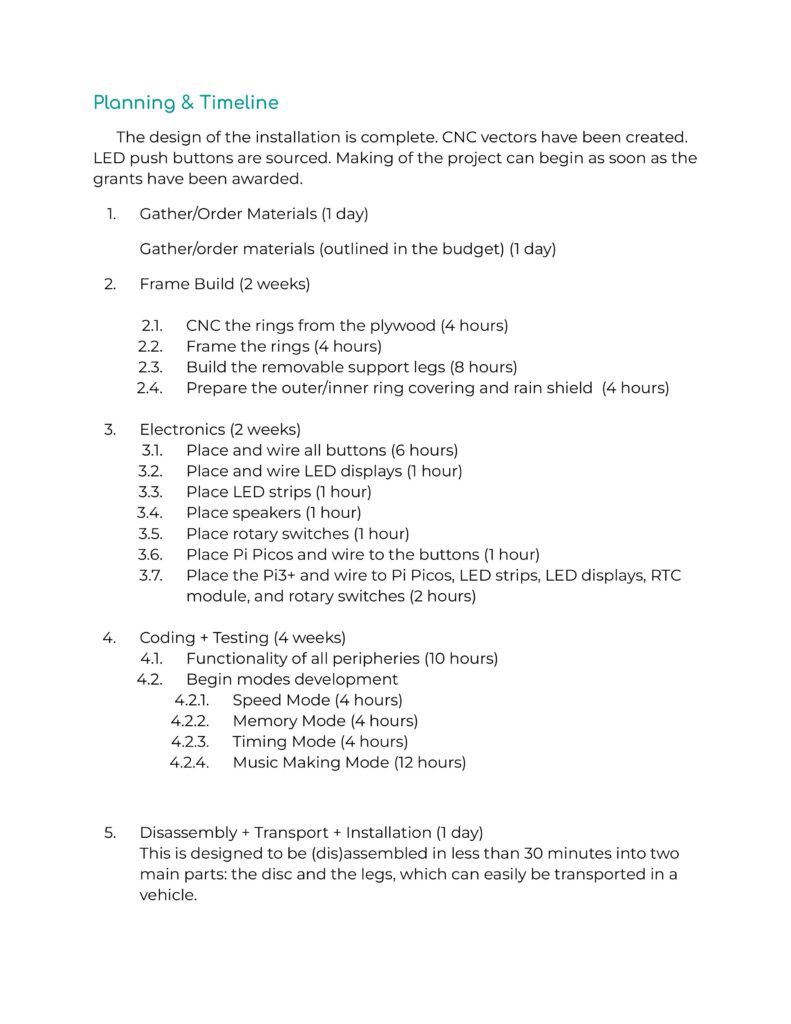
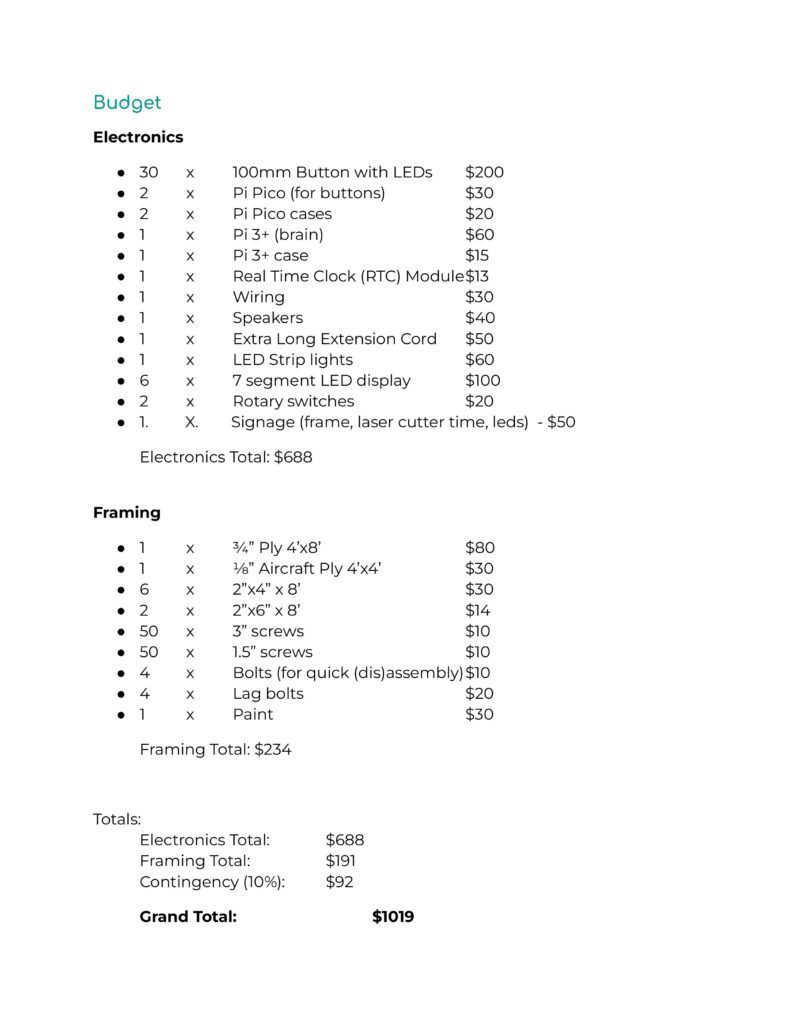
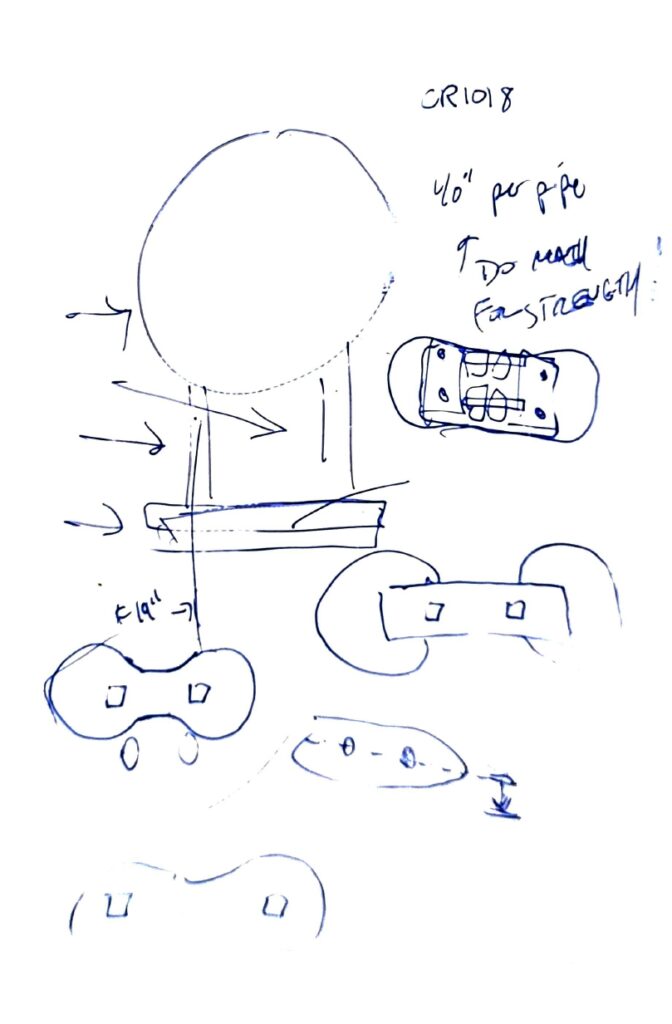
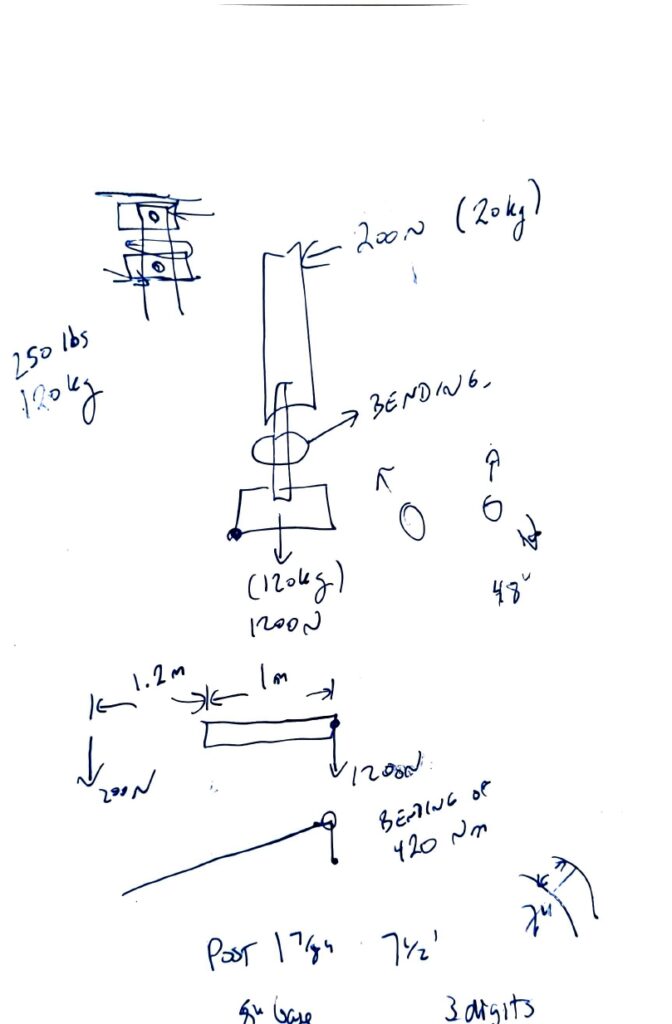
Once funding was secured, we had just two months to bring i/o Mimicry to life. The project moved into an intense phase of development and execution composing of three main phases: the physical structure, the electronics, and the code. Throughout the process, I led the detailed design, including sourcing materials, planning fabrication techniques, and the entirety of the code.
The Physical Structure
The structure was developed with a range of tools including a CNC router, laser cutter, and woodworking equipment.
Certain design elements emerged organically during the development process, such as the outer shell’s design. We needed a solution to conceal the internal components that is water resistant and incorporates lighting for visibility at night. These practical constraints provided an opportunity to enhance the aesthetic appeal of the design while staying on theme.
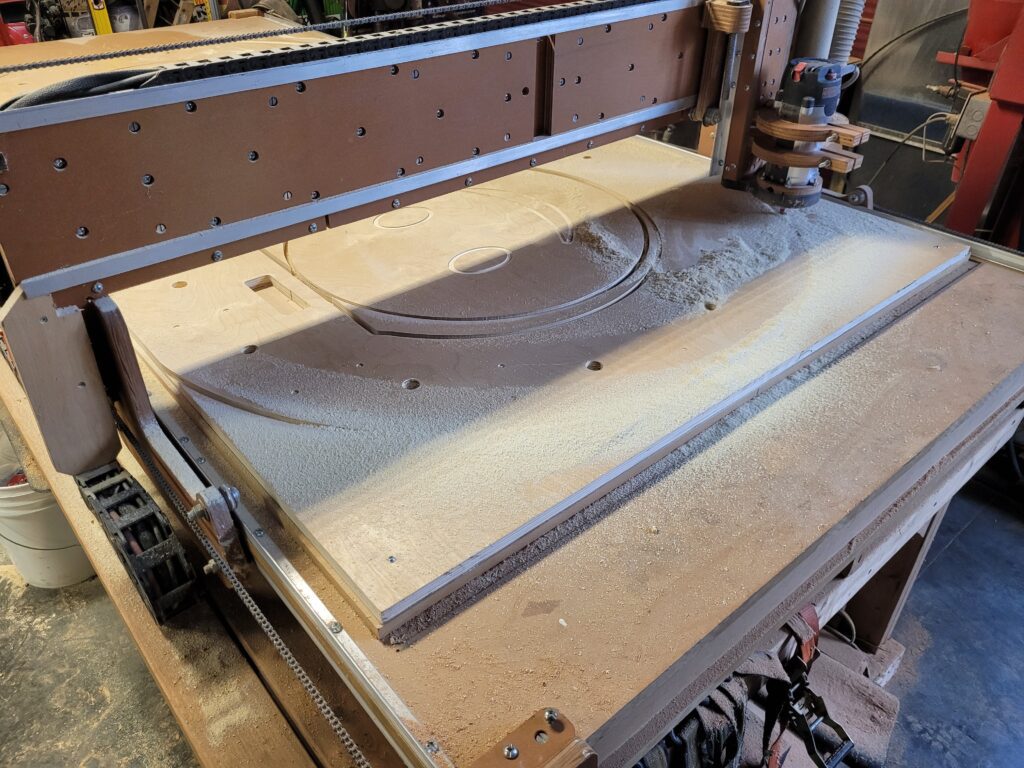
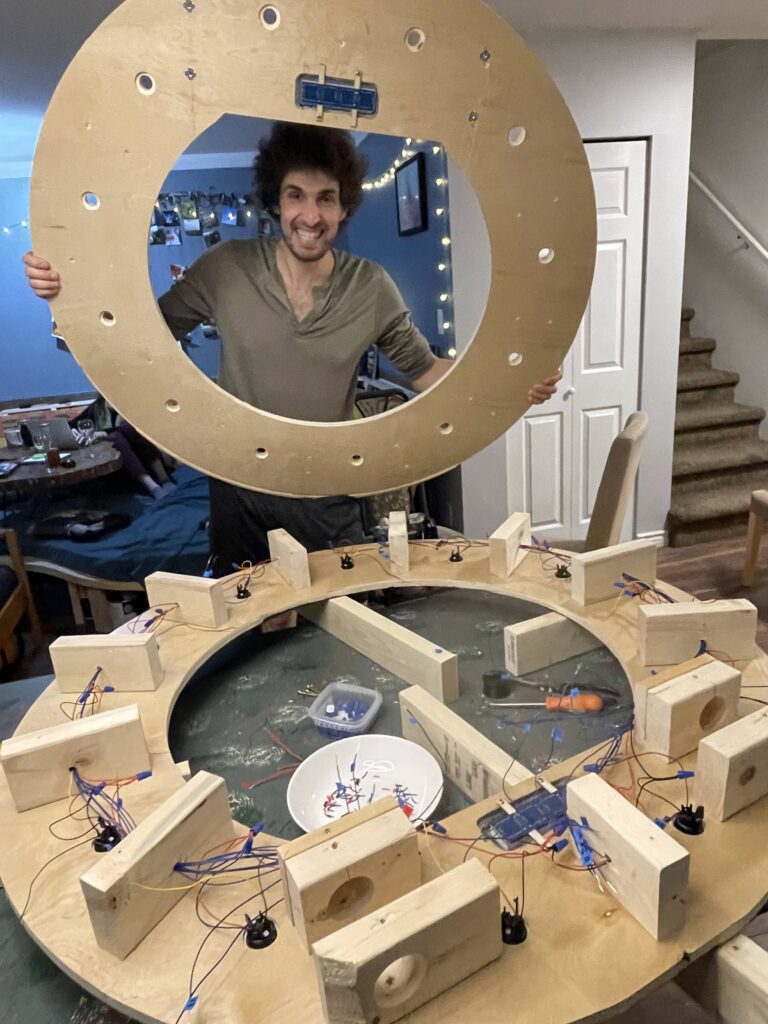
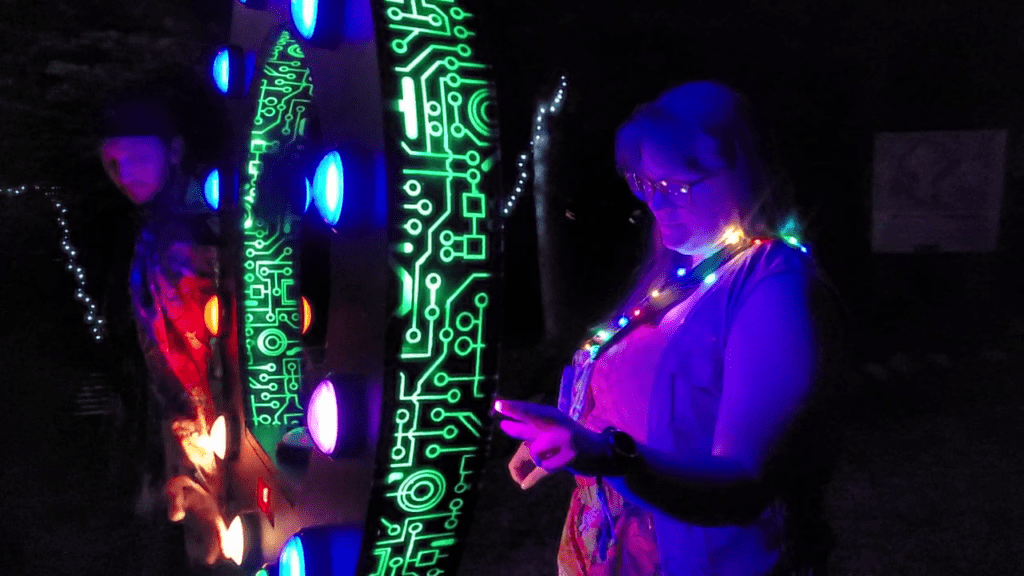
Electronics
The electronics were sourced, tested, and installed. The system was wired to connect key components, including the Teensy 4.12 microcontroller, RGB buttons, LED strips, and speakers. Initially, the design relied on multiple interconnected microcontrollers; however, a more streamlined solution was achieved with the Teensy 4.1 because of its processing power and ample GPIO ports allowed it to efficiently handle audio output and manage the large number of connections required for the installation.
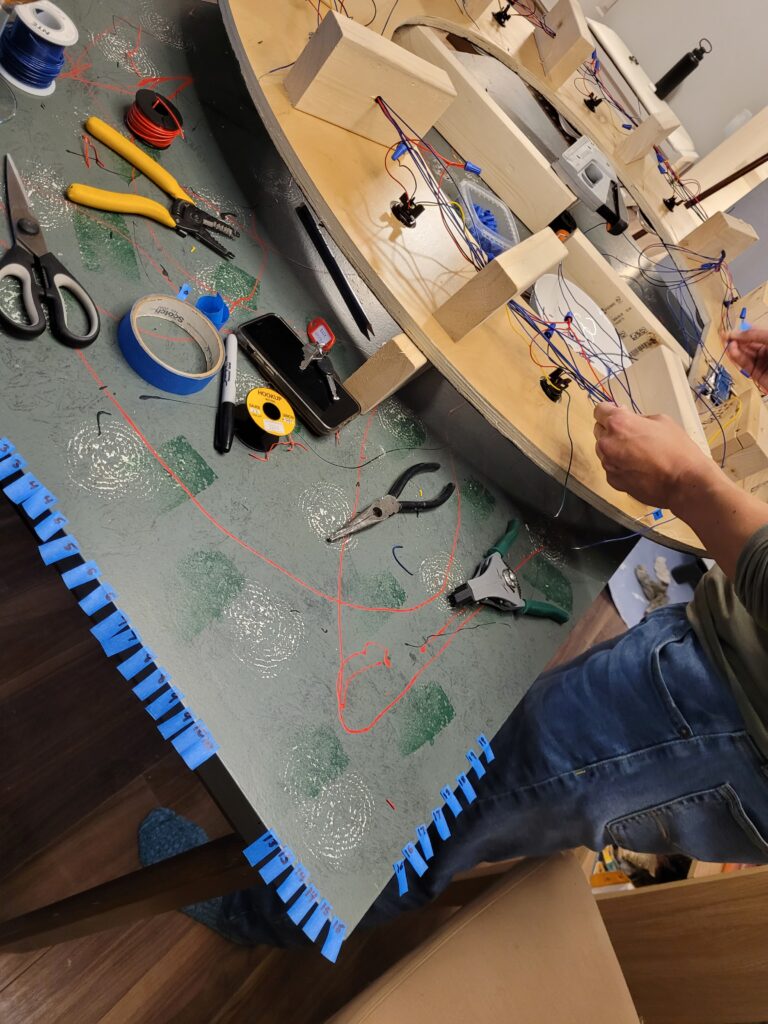
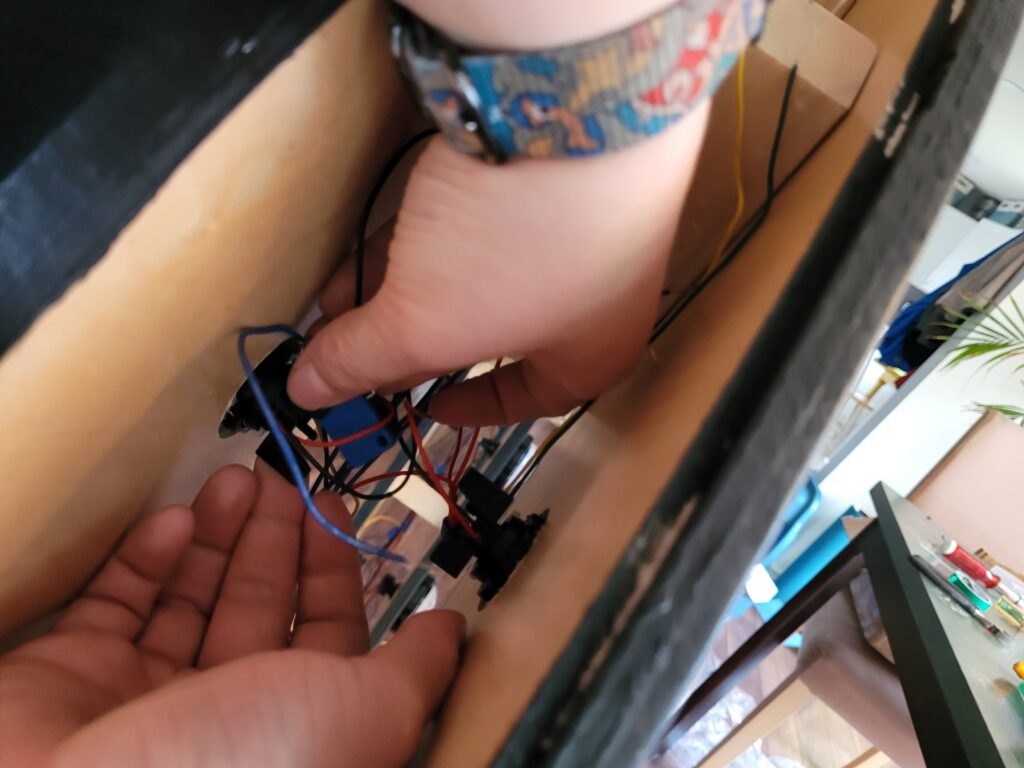
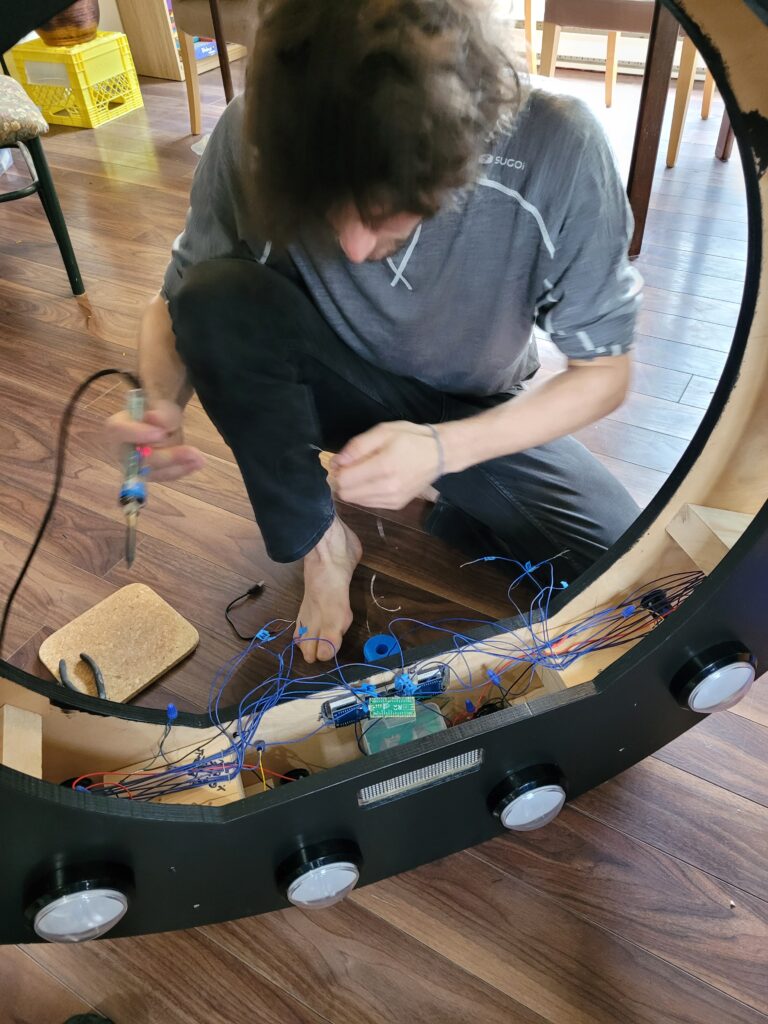
The Code
The code was developed in Arduino C++, starting with basic functionality and then the four play modes: reaction test, memory test, music mode, and poetry mode. The success of the code relied heavily on testing to ensure functionality, intuitiveness, and fun.
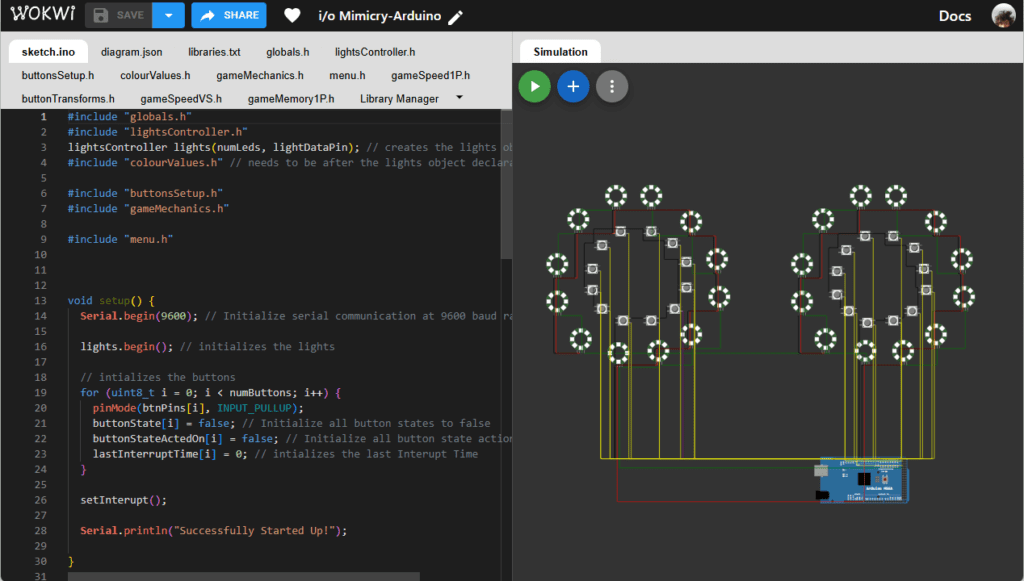
The music mode relied on loops to function which I crowdsourced through forums associated with the arts festival. This collaborative effort led to contributions from four artists, three of whom I had never met before. I connected with artists and set up a simple, effective way for them to submit and share their loops. This collaboration was rewarding as it allowed me to connect and create art with strangers. Meeting some of them at the event was especially meaningful, as they shared a sense of ownership and pride in the final art piece.
Results
We not only successfully completed i/o Mimicry for the Otherworld festival, it was so successful that we showcased it at two other events within the first year, Burn in the Forest4 and The Woodstove Festival5.
At nearly all times of the day and night, people of all ages were gathered around and playing with i/o Mimicry.
Learnings
i/o Mimicry was an exploration aimed at maximizing the interactive elements of art, with a focus on accessibility, engagement, and fun. It has evolved into a flexible platform for experimenting with new modes of play through code revision. Key takeaways include:
- Interactivity is about invitation, not just mechanics
The simplicity of large buttons, lights, and sound made the installation approachable and intuitive for all ages. Successful interactive art is where the public has agency to manipulate the experience—it’s about making people feel comfortable and eager to explore. - Multi-modality enhances engagement
By incorporating different modes of play—competitive, social, exploratory, and open-ended creative play—i/o Mimicry supported diverse forms of interaction. This confirms principles from Universal Design for Learning6 to promote learner agency by providing multiple modes for engagement, representation, action and expression. - Constraints fuel creativity
Durability, portability, and weather resistance weren’t just challenges; they drove design improvements. The outer shell, originally for protection, became an integral aesthetic feature. - Prototyping and iteration are essential
While early designs provided structure, real-world testing refined the experience. New play modes were imagined and reimagined in addition to structural details through hands-on experimentation.
Application
The insights gained from i/o Mimicry will inform and guide my approach to future projects. This experience has deepened my understanding of how interactive art can be both a platform for creativity and a tool for community connection. Moving forward, I will continue to build on these lessons to create even more engaging and dynamic installations:
- Prioritizing intuitive play
Designing for immediate engagement ensures that anyone, regardless of age or background, can step in and participate effortlessly. - Turning constraints into design opportunities
Rather than seeing limitations as barriers, I will continue to use them as catalysts for innovation in fabrication and interaction design. - Harnessing community-driven content
Crowdsourcing music loops enriched the installation and fostered shared ownership. Future projects will further integrate open collaboration, allowing contributors to shape the experience.
More than an art piece, i/o Mimicry was a testbed for creative interaction, social play, problem-solving, and community engagement—laying the groundwork for even more ambitious interactive installations.
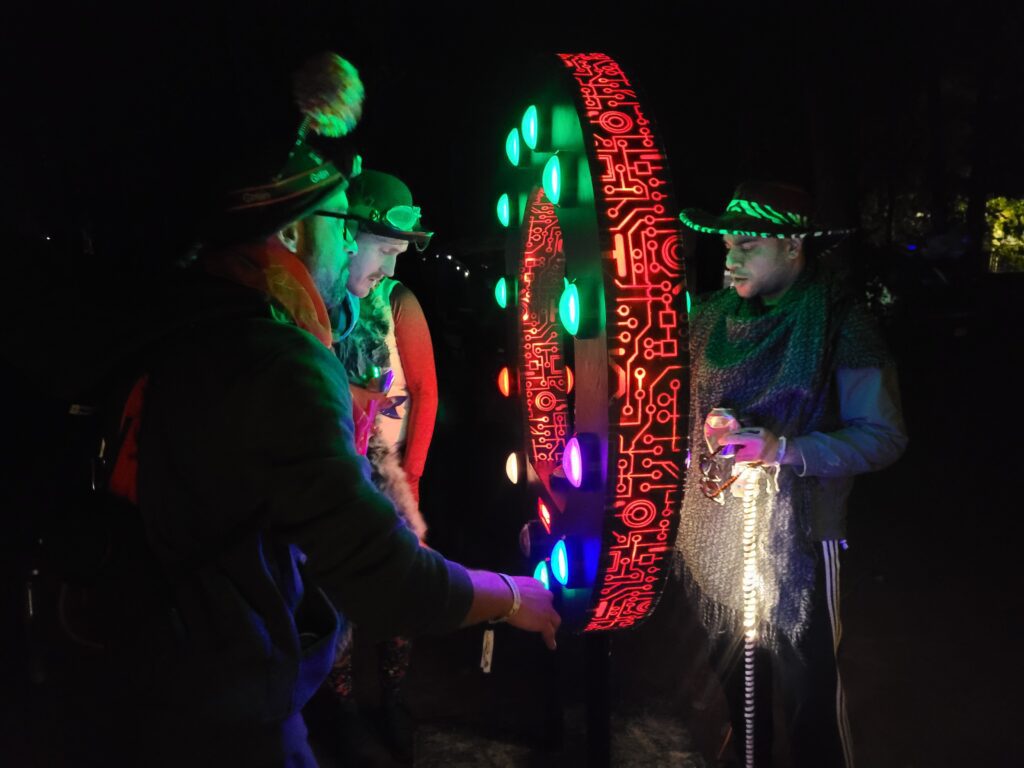
Footnotes
- Otherworld: A Vancouver Island Regional Burning Man Event. Otherworld is a multi-day event, held annually on Vancouver Island — with art, music and community at its core. Together, every participant helps co-create an experience distinct from our everyday physical world or reality. https://otherworld.ca/
- Teensy 4.1: a powerful microcontroller board designed for high-speed applications. https://www.pjrc.com/store/teensy41.html
- Wokwi is an online platform for simulating microcontroller projects, such as those built with Arduino, ESP32, and Raspberry Pi Pico. It allows users to design, code, and test circuits in a browser without needing physical hardware, making it ideal for prototyping and learning. https://wokwi.com/
- What If, formally known as Burn in the Forest, is the Greater Vancouver Interactive Arts Society’s (GVIAS) Official Burning Man Regional annual summer event. https://whatif.now/
- The Woodstove Music & Arts Festival is a non-profit community arts festival presented by Cumberland Culture & Arts Society. It takes place in a variety of unique venues downtown in the Village of Cumberland, BC on the unceded traditional territory of the K’ómoks First Nation. https://www.woodstovefestival.ca/
- CAST. (2022). The UDL Guidelines. Retrieved from https://udlguidelines.cast.org/